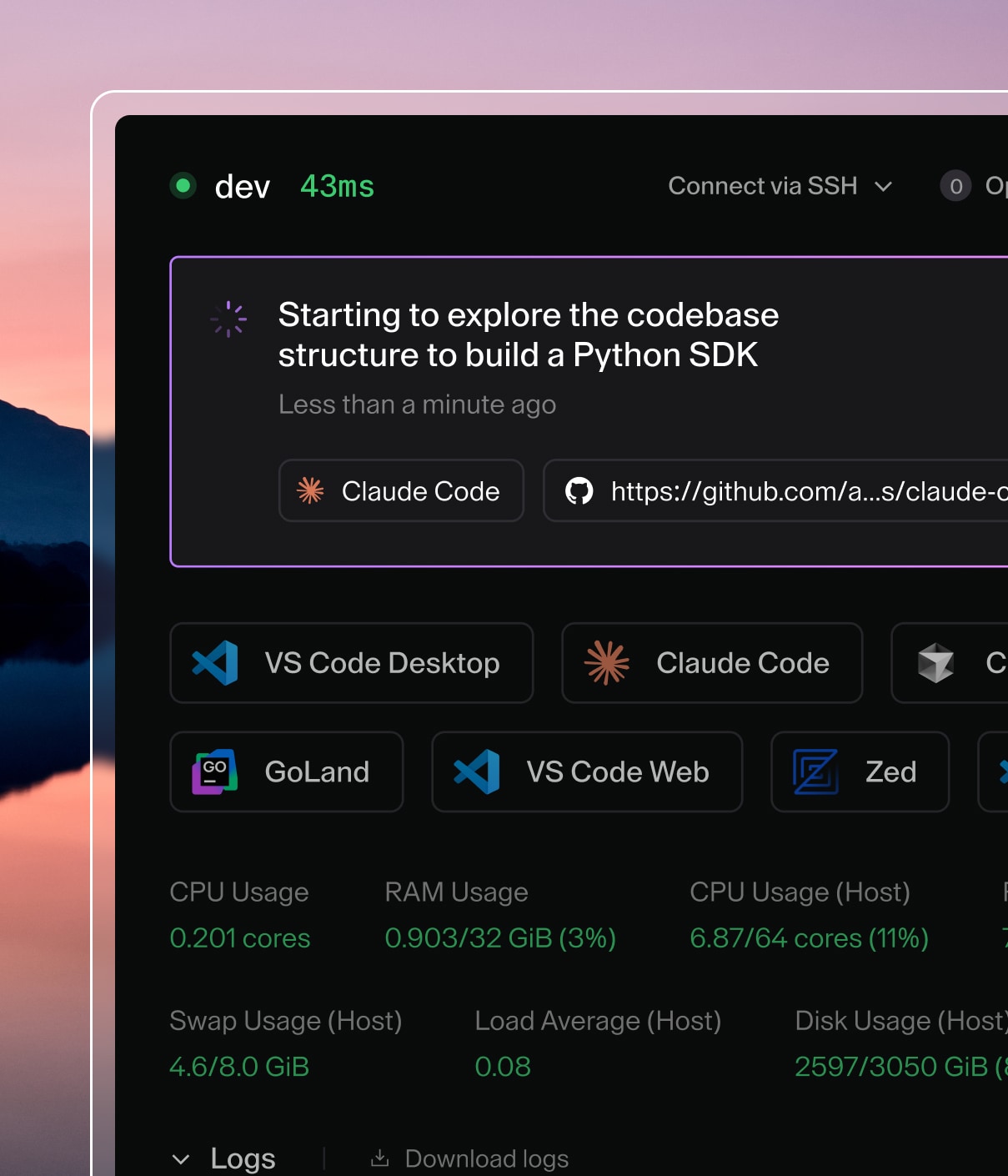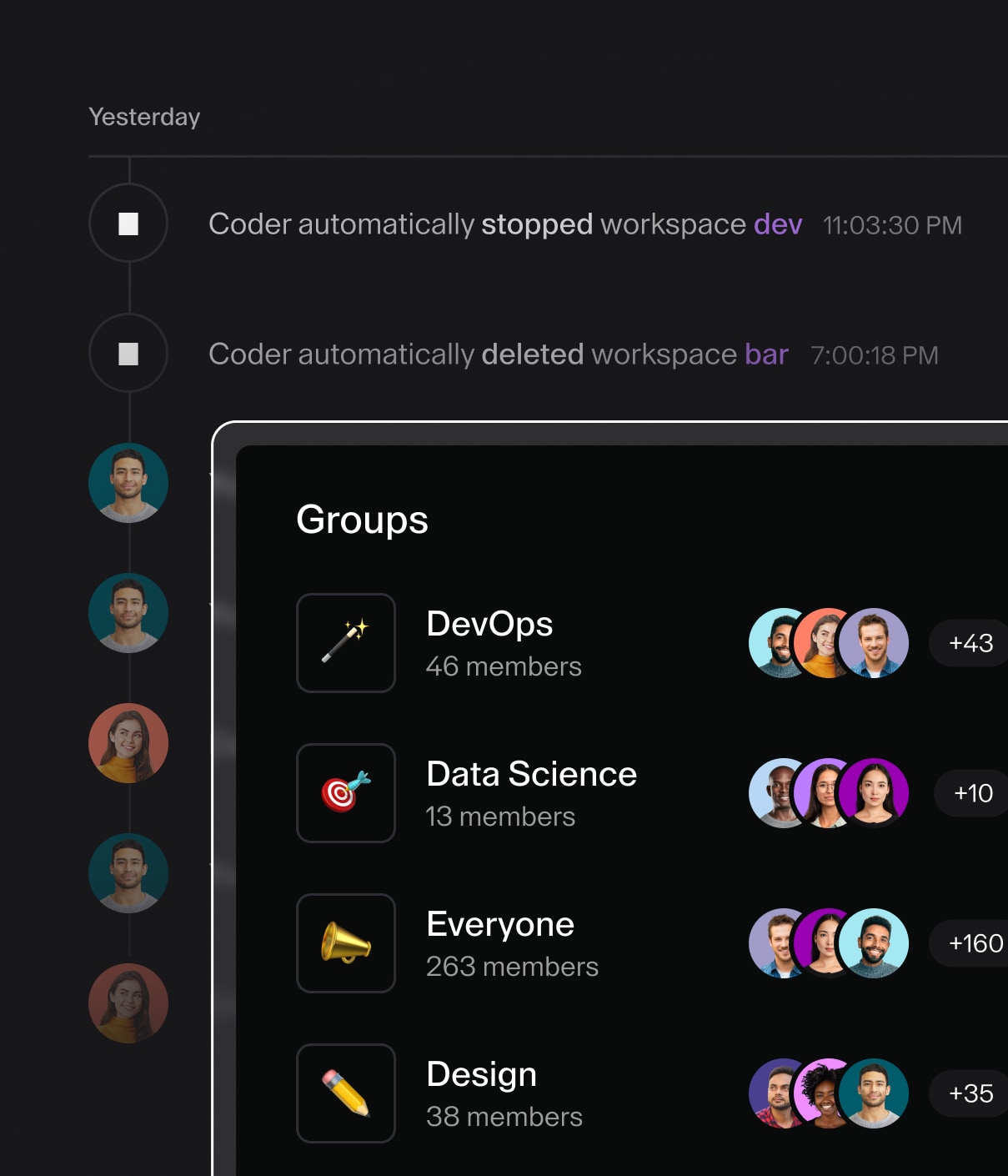Up to 1,000 Users
The 1,000 users architecture is designed to cover a wide range of workflows. Examples of subjects that might utilize this architecture include medium-sized tech startups, educational units, or small to mid-sized enterprises.
Target load: API: up to 180 RPS
High Availability: non-essential for small deployments
Hardware recommendations
Coderd nodes
| Users | Node capacity | Replicas | GCP | AWS | Azure |
|---|---|---|---|---|---|
| Up to 1,000 | 2 vCPU, 8 GB memory | 1-2 nodes, 1 coderd each | n1-standard-2 | m5.large | Standard_D2s_v3 |
Footnotes:
- For small deployments (ca. 100 users, 10 concurrent workspace builds), it is
acceptable to deploy provisioners on
coderdnodes.
Provisioner nodes
| Users | Node capacity | Replicas | GCP | AWS | Azure |
|---|---|---|---|---|---|
| Up to 1,000 | 8 vCPU, 32 GB memory | 2 nodes, 30 provisioners each | t2d-standard-8 | c5.2xlarge | Standard_D8s_v3 |
Footnotes:
- An external provisioner is deployed as Kubernetes pod.
Workspace nodes
| Users | Node capacity | Replicas | GCP | AWS | Azure |
|---|---|---|---|---|---|
| Up to 1,000 | 8 vCPU, 32 GB memory | 64 nodes, 16 workspaces each | t2d-standard-8 | m5.2xlarge | Standard_D8s_v3 |
Footnotes:
- Assumed that a workspace user needs at minimum 2 GB memory to perform. We recommend against over-provisioning memory for developer workloads, as this my lead to OOMKiller invocations.
- Maximum number of Kubernetes workspace pods per node: 256
Database nodes
| Users | Node capacity | Replicas | Storage | GCP | AWS | Azure |
|---|---|---|---|---|---|---|
| Up to 1,000 | 2 vCPU, 8 GB memory | 1 node | 512 GB | db-custom-2-7680 | db.m5.large | Standard_D2s_v3 |
Footnotes for AWS instance types:
- For production deployments, we recommend using non-burstable instance types,
such as
m5orc5, instead of burstable instances, such ast3. Burstable instances can experience significant performance degradation once CPU credits are exhausted, leading to poor user experience under sustained load.

